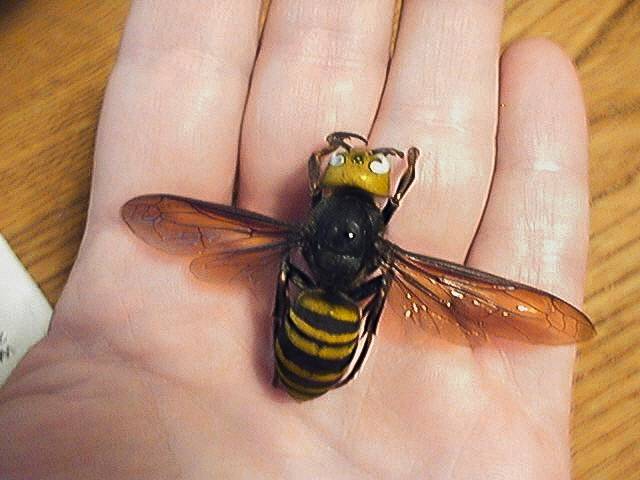As if 2020 hasn’t been hectic enough, the Washington State Department of Agriculture and the Washington Invasive Species Council are asking the public all over the state to keep an eye out for the Asian giant hornet.
The Asian giant hornet is an invasive species and could potentially decimate honeybee populations in the United States as they attack and destroy hives and then defend them as their own. A few of these hornets can destroy a hive in just a few hours.
“When it comes to preventing and stopping a new invasive species, we all have a role to play and this is a great example,” said Justin Bush, executive coordinator of the Washington Invasive Species Council. “The first detection of Asian giant hornet in the entire United States was made by an aware member of the public. Every other detection since has been made by everyday citizens. Being aware of new plants and animals or changes in your community and then letting the experts know if something seems like a problem can save thousands, if not millions of dollars, in damages.”
The hornets are not expected to be out in large numbers until July or August when worker hornets become active and the queens stop leaving their nests, but it has already been spotted in two Washington cities.
Officials are asking the public to report any sightings as quickly as possible and to give as much detail as possible — photographs are highly encouraged as well if they can be taken safely. If you find a dead hornet, save it for testing. Folks can report findings on the Hornet Watch Report Form, the WA Invasives App or on the WISC website.
Officials are also reminding the public to take extreme caution as Asian giant hornets are far more dangerous than any local bee. Even typical beekeeping protective clothing is not enough to protect from this hornet’s sting, and they can do so multiple times.
The WSDA also has citizen scientist trapping information for those who wish to trap hornets on their own land. Residents of Clallam, Island, Jefferson, San Juan, Skagit and Whatcom Counties are especially encouraged to get involved.
“The public has, and continues to, play a critical role in the response to Asian giant hornet,” said Sven Spichiger, managing entomologist for the WSDA. “We can only put up so many traps, but if people are on the lookout for them, it greatly increases our odds of finding and eradicating them.”
The WSDA will handle the eradication of nests and deployment of additional traps in an area determined to have the Asian giant hornet.
“We are closely monitoring the situation and providing technical and financial support to WSDA as they work to find and eradicate this pest,” said Tim St. Germain, State Plant Health director with U.S. Department of Agriculture’s Animal and Plant Health Inspection Service (APHIS). “These finds indicate that there’s a population of Asian giant hornets in northwest Washington, but APHIS does not consider the population to be established. APHIS considers a pest to be established in an area when there is evidence of a reproducing population over multiple years.”



